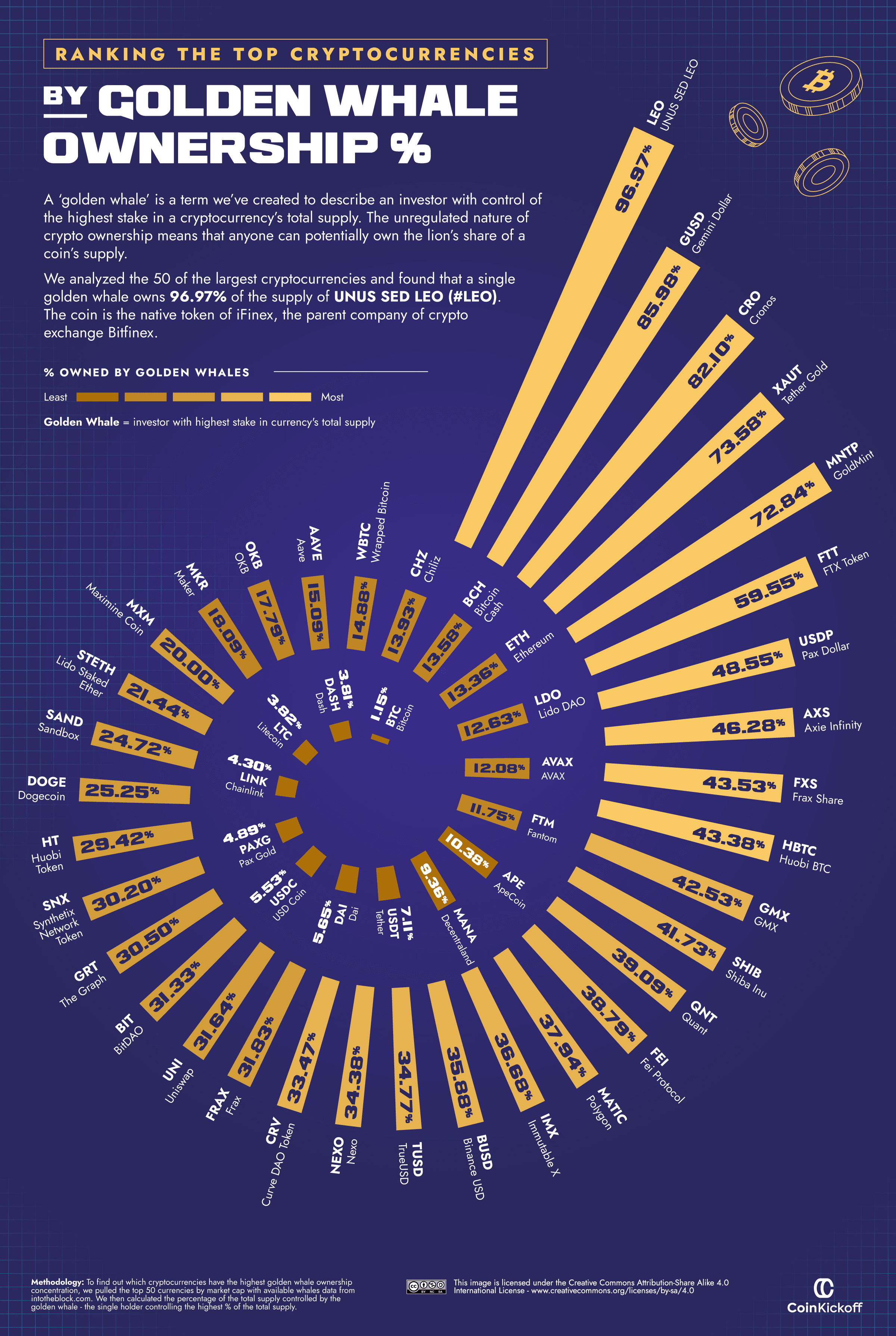
With more than 12,000 cryptocurrencies on the market today, there is every reason for investors to diversify their portfolios with established and emerging coins. Owning multiple currencies might be a good idea, as your risk of losing capital is reduced if one coin loses value. There is also a diverse range of cryptocurrencies on the market that serve different purposes, from faster blockchain technology to discounted rates on currency exchanges.

- 350+ Cryptocurrencies Listed
- <0.10% Transaction Fees
- 120 million Registered Users
- Secure Asset Fund for Users
- Earn On Deposits

- US Based
- Start with as little as $10
- Buy and sell 200+ cryptocurrencies
- Pro Solution for larger traders
- Available in 190+ countries
According to Statista, there are more than 82 million crypto wallets in existence, and downloads of the 30 largest crypto apps exceeded 500 million in 2021. Interest and investment in crypto are surging, yet the average investor will only hold a tiny fraction of a coin’s total stock. Meanwhile, those with larger portfolios or direct interest in a token own significantly larger shares.
In crypto, we use the term ‘whale’ to describe an investor with 1% or more of the total supply of a particular currency. Owning a larger stake gives them greater influence over a coin’s value and other smaller investors.
In 2021, The Telegraph reported that 40% of all Bitcoin (approximately $240 billion) is owned by around 2,500 investors. This makes the coin’s supply, according to the Telegraph’s analysis, scarcer in supply for the average investor and gives crypto whales control to manipulate the coin’s price on the market.
As governments move to regulate the crypto market, there is an argument that the influence of whales should be controlled to prevent their influence from dominating a coin’s stock and potentially causing its value to crash. But what do we know about the profile of whales currently trading in the crypto market? Coin Kickoff has investigated the industry to find out.
What We Did
We analyzed the 200 largest cryptocurrencies on the market with available data on quantity of whale ownership, which was sourced from intotheblock.com — a blockchain analytics platform.
We then used this information to analyze the currencies with the smallest and largest proportions of a coin’s total stock owned by a crypto whale, as well as the quantity of stock owned by golden whales and the distribution of whale-owned stakes in currency across the cryptocurrency landscape.
Key Findings
- 98.95% of stock in UNUS SED LEO (#LEO) is owned by whales — the most whale-dominant coin on the market.
- Whales own more than half of a coin’s stock, with 36 of the 50 largest currencies by market cap.
- 96.97% of UNUS SED LEO stock is owned by a single individual, meaning they hold receipt of the largest proportion of any cryptocurrency you can own.
- Just 1.15% of Bitcoin stock is owned by a crypto whale — its founder Satoshi Nakamoto, making it the coin least dominated by whale investors.
72% of Crypto’s Largest Coins Have Over Half of All Stock Controlled by Whales
While the cryptocurrency market remains unregulated, nothing currently prevents whale investors from owning considerable majorities of a coin’s stock. Smaller investors use whales, tracking their movements and investments as a gauge for price changes to their coin portfolios. Because of their influence, they are highly watched by the crypto community. But just how many are there?
Click here to see the image in full size
Our analysis shows that stock from 36 of the 50 largest currencies is majority-owned by whales, and 13 coins have more than 90% of their stock in the hands of whales. The largest of these is UNUS SED LEO (#LEO), where 98.95% of its tokens belong to just two people. LEO’s whale dominance can be attributed to a buyback and burn scheme as redemption from a fraud investigation in May 2019.
The coin was established as the token for iFinex, a company that owns and operates currency exchange Bitfinex. Ownership of the coin allows holders to save on transaction fees when trading on Bitfinex. Following an investigation by the New York Attorney General in which iFinex covered up an $850m loss with a payment to Panamanian company Crypto Capital Corp., iFinex introduced a buyback scheme — raising $1 billion in a transparency initiative.
“Golden Whales” Own Majority of Crypto Supply for Six Major Coins
To better understand crypto whales and their control of a coin’s total supply, we created the term “golden whale” to describe an investor with the largest proportion of its total stock. In business, a shareholder can gain a controlling stake in a public company if they own more than 50% of its shares, which gives them overall influence in the boardroom.
Click here to see the image in full size
While cryptocurrency doesn’t work in the same way, it is still possible for a golden whale to own the majority of a cryptocurrency’s stock. Our research shows that six of the 50 largest coins by market cap have more than 50% of their stock owned by a single investor.
While 96.97% of UNUS SED LEO’s supply is owned by one person, this can be explained by its buyback scheme. Gemini’s Dollar (#GUSD) also has the overwhelming majority of its coin stock under the control of a golden whale. In this case, 85.98% of its supply is kept in reserve amid concerns about Gemini’s insolvency.
While Gemini showed early promise by becoming the first regulated stablecoin backed by the New York Department of Financial Services — seeking to balance the stability of the U.S. dollar with the speed of blockchain technology. However, it performed sluggishly on the market, causing Gemini to burn one-fifth of GUSD supply in December 2019.
Crypto.com’s Cronos coin (#CRO) is another coin with vast quantities in the hands of a golden whale — 82.1% in the hands of a single individual. In this case, there has been greater scrutiny towards centralized exchanges since the fall of FTX last month, and while user funds are held in offline wallets, as records showed that 82% of Crypto.com’s Ethereum reserves (approx. $400m) were suspiciously transferred away from the exchange.
Chainlink Whales Control 56% of Coin Supply
Visualizing whale ownership distribution gives us a unique opportunity to see how individual investors control and influence the cryptocurrency market. Despite Bitcoin’s reputation for whale investment, which has been fluctuating since early 2023 as a result of a price surge, our research shows that only Satoshi Nakotomo — the currency’s founder — can be considered a true ‘Bitcoin whale.’
Our research shows that he owns 1.15% of Bitcoin’s total stock, which has never been moved since the currency was first mined. Today it is estimated to be worth in excess of $30 billion, which, if sold, would place Nakotomo among the richest people in the world according to the Forbes 400 list.
Click here to see the image in full size
At the opposite end of the spectrum, Chainlink (#LINK) has the highest quantity of whale ownership, with 20 investors owning 56% of the coin’s total stock. As of January 2023, 460 addresses hold at least 100,000 LINK tokens — a 26% increase from May 2022, despite the market’s poor performance during the second half of the year. During this time, whales dumped 880,000 LINK worth $6m, which later resulted in a 23% price increase at the start of 2023.
Cryptocurrency Whales Set to Dominate 2023 Market After FTX Crash

- 350+ Cryptocurrencies Listed
- <0.10% Transaction Fees
- 120 million Registered Users
- Secure Asset Fund for Users
- Earn On Deposits

- US Based
- Start with as little as $10
- Buy and sell 200+ cryptocurrencies
- Pro Solution for larger traders
- Available in 190+ countries
Chainlink’s whale dominance shows why the crypto industry tracks its investment closely. Major activity in coin stock from high net-worth wallets puts investors on notice and contributes towards crypto’s notorious volatility. You can view the full dataset below, including the whale ownership distribution data for the top 200 currencies on the market.
Market shows that whale investment in Bitcoin and Ethereum spiked following the FTX crash in November 2022, indicating that high net worths are looking for safer long-term investments in crypto that will see a long-term return.
This also coincides with increasing regulation of crypto; the Biden administration in the U.S. continues to push Congress to step up its lawmaking efforts to protect consumers from collapses on the scale of LUNA or FTX. Whale ownership of cryptocurrency will continue to be an obsession for investors as they look for trends in the market’s direction in the ever-turbulent coin market.
Methodology
To find out which cryptocurrencies have the highest whale ownership concentration, we pulled the top 200 currencies with available whale data from intotheblock.com and analyzed their ownership distribution.
First, we pulled the whale data from each cryptocurrency. Then, we summed the holding percentages from the whales of each coin to discover which cryptos have the highest percentage controlled by whales. Following this, we selected the golden whale for each crypto and its holding percentage. Finally, we calculated the percentage of the total supply of each coin that is not controlled by whales.
The data was collected in January 2023.
————————————————————————————————————————————–
Terms:
– Total Supply: Total number of tokens for a cryptocurrency, whether on the market or not.
– Whale: A cryptocurrency holder that controls more than 1% of its total supply.
– ‘Golden Whale’: A term we have coined for the purposes of this research to describe the whale that controls the highest stake in the total supply of a currency.
Other Popualr Guides
- 3 Best Bitcoin Crypto Casinos With Bonuses
- How to Buy Bitcoin (BTC)
- How to Buy Ethereum (ETH)
- How to Buy Dogecoin (DOGE)
- How to Buy Shiba Inu (SHIB)
- How to Buy Solana (SOL)
- How to Buy Litecoin (LTC)
- How to Buy Polkadot (DOT)
- How to Buy Polygon (MATIC)
- How to Buy Cardano (ADA)
- How to Buy Avalanche (AVAX)




